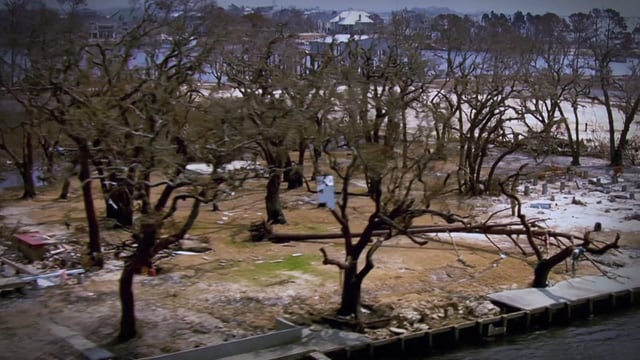 Former North Carolina Governor Jim Hunt and former Mississippi Governor Haley Barbour have some advice for dealing with major hurricane recovery. In a new video, the governors and former senior emergency management staff discuss the complexities of planning for and recovering from major storm events.
Former North Carolina Governor Jim Hunt and former Mississippi Governor Haley Barbour have some advice for dealing with major hurricane recovery. In a new video, the governors and former senior emergency management staff discuss the complexities of planning for and recovering from major storm events.
The video, “The Role of States in Disaster Recovery,” is an instructional video combining research and oral history to address dealing with the type of large-scale natural disasters that coastal states face. It focuses on the recovery from Hurricane Floyd (North Carolina, 1999) and Hurricane Katrina (Mississippi, 2005). Both storms were the costliest in their states’ respective histories.
The video was funded by the Coastal Resilience Center of Excellence (CRC) and the Federal Emergency Management Agency (FEMA) and produced as part of the CRC grant. It includes interviews with several individuals based on their role during recovery periods for Floyd and Katrina:
- Ashley Edwards, of the Miss. Governor’s Office for Recovery & Renewal
- Billy Ray Hall, Director of the Hurricane Floyd Redevelopment Center
- Norma Houston, of the NC Redevelopment Center and legal counsel for NC State Sen. Marc Basnight
- CRC Director Gavin Smith, who was Assistant Director of North Carolina Emergency Management at the time of Hurricane Floyd, and Executive Director of the Governor’s Office of Recovery & Renewal after Hurricane Katrina
- Faye Stone, Executive Director of the NC Commission on Volunteerism & Community Service during Hurricane Floyd Recovery
- Mike Womack, Director of the Mississippi Emergency Management Agency
The video is part of a larger, multi-year project that includes an instructional guide, journal articles and a future book on the same subject. The project explains the role of the state in disaster recovery, including the key roles assumed by executive and mid-level managers, namely governors, their cabinet and state agency officials tasked with disaster recovery duties.
“We know a lot less about the state role in recovery, relative to the federal and local level,” Smith said. “We hope this can address a gap in materials available for colleges and universities as well.”
Intended audiences include governors, state government officials and state-level non-governmental agencies, Smith said, along with FEMA, colleges and universities and others involved in long-term disaster recovery planning.
“In many cases, states create ad hoc post-disaster recovery organizations in response to the myriad issues that emerge after extreme events rather than developing a robust, pre-disaster recovery enterprise that is sustained over time,” Smith said.
In September 1999, Hurricane Floyd led to more than 50 deaths in North Carolina as the Category 2 storm made landfall near Cape Fear. Hurricane Katrina reached more than 150 miles inland in Mississippi as a Category 3 storm in August 2005.
The interviews were filmed in 2015 by Horizon Productions, a Durham, N.C.-based company. UNC-Chapel Hill students and Career Development Grant recipients Ashton Rohmer and Lea Sabbag collected data, developed interview instruments and participated in the video production process.
For more information on the video, visit the project page.
